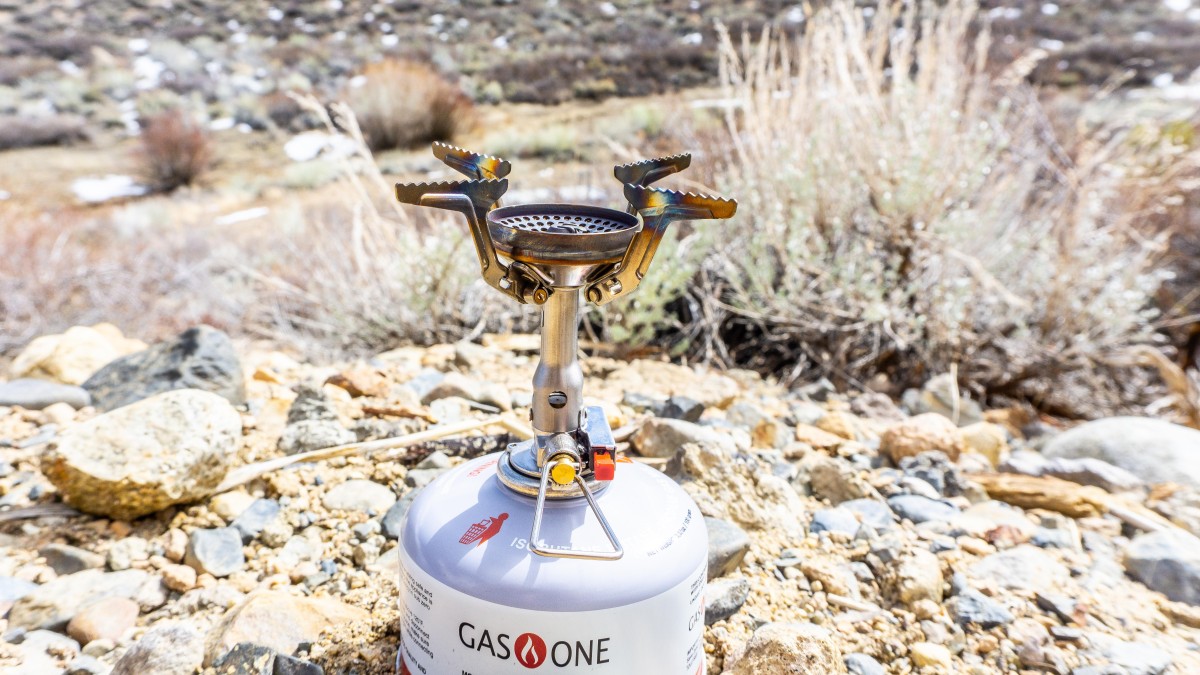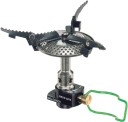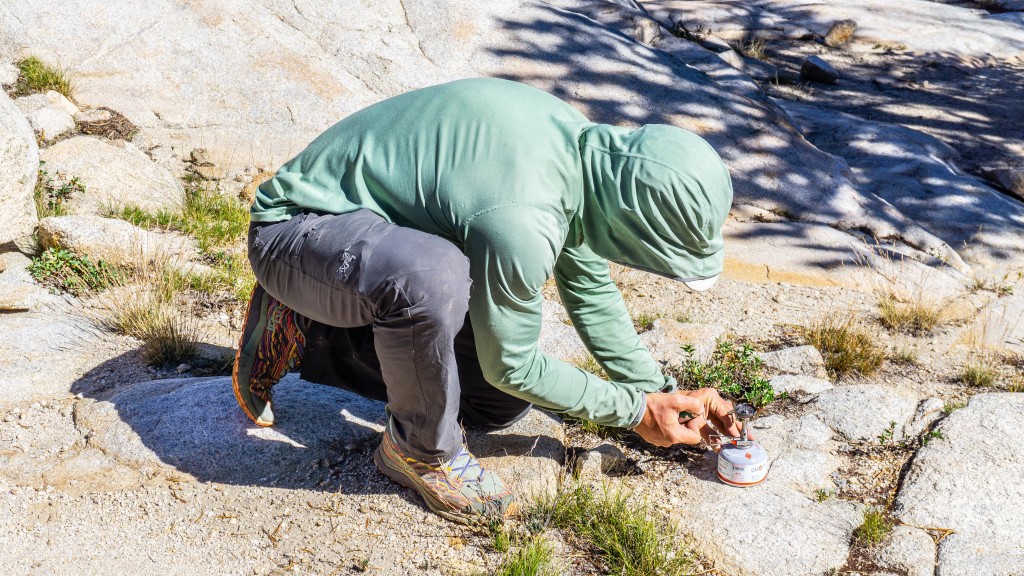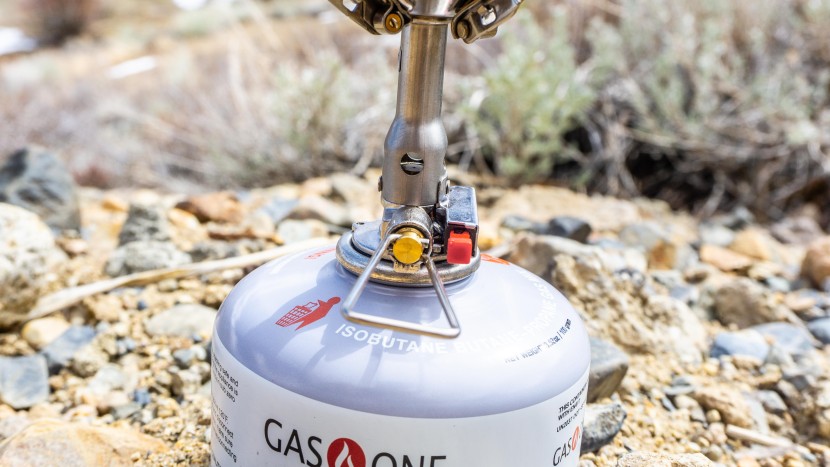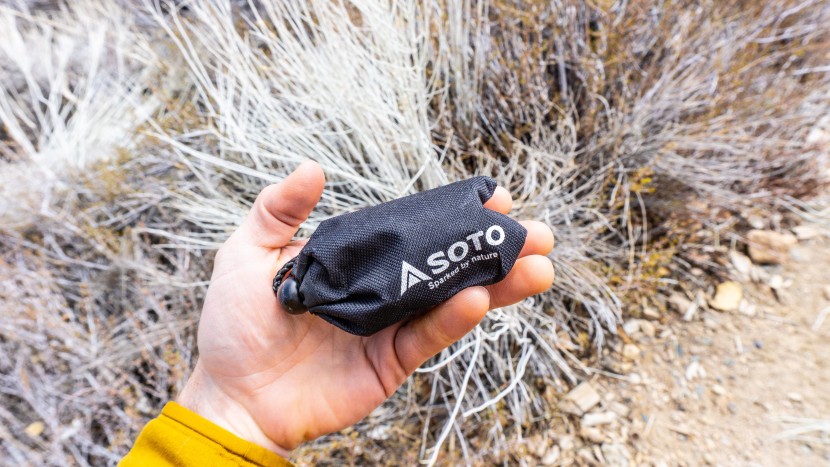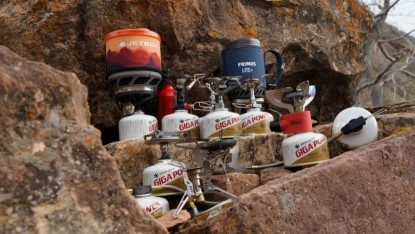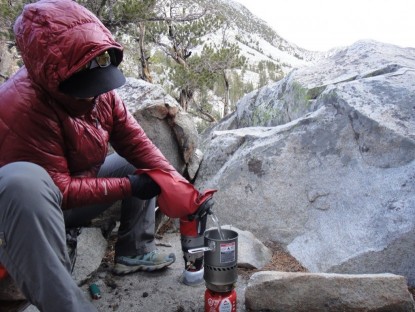
Our Verdict
Compare to Similar Products
 This Product
Soto Amicus | |||||
|---|---|---|---|---|---|
| Awards | Excellent Affordability | Best on a Tight Budget | |||
| Price | $50 List $49.95 at Amazon | $44.15 at Amazon Compare at 2 sellers | $30 List $29.95 at Amazon | $17.00 List $16.90 at Amazon | $30 List $29.87 at Amazon |
Overall Score  |
|||||
| Star Rating | |||||
| Bottom Line | This canister stove is lightweight, compact, fuel efficient, and performs well in wind | A compact, lightweight, and easy to use stove for fair-weather backpacking | A bulky small canister stove that's good at simmering but doesn't have a piezoelectric start | A mini stove with a mini price | Inexpensive and decent at simmering, not so great at everything else |
| Rating Categories | Soto Amicus | Optimus Crux Lite | Primus Essential Trail | BRS-3000T | Coleman Single Burner |
| Fuel Efficiency (25%) | |||||
| Weight (25%) | |||||
| Simmering Ability (20%) | |||||
| Ease of Use (15%) | |||||
| Boil Time (15%) | |||||
| Specifications | Soto Amicus | Optimus Crux Lite | Primus Essential Trail | BRS-3000T | Coleman Single Burner |
| Measured Essential Weight | 9.8 oz | 9.3 oz | 11.1 oz | 7.5 oz | 13.1 oz |
| Fuel Type | Isobutane | Isobutane, propane | Isobutane | Isobutane | Isobutane |
| Type | Small Canister | Small Canister | Small Canister | Small Canister | Small Canister |
| Additional Included Items | Stuff sack | Storage bag | None | Stuff sack | None |
| Dimensions | 3.9" × 0.7" × 6.5" | 2.8" x 2.2" x 2.2" | 4.3" x 2.4" | 2" x 1.2" x 1.3" | 5.1" x 5.5" x 4.3" |
| Wind Boil Time (1 liter, 2-4mph) | 6:30 min:sec | 7:54 min: sec | 10:10 min | 14:45 min:sec | >15 min |
| Boil Time (1 liter) | 2:6 min:sec (.5 liters) | 4:35 min: sec | 5:30 min:sec | 5:13 min:sec | 7:08 min:sec |
| Packed Weight (stove + all accessories) | 3.5 oz | 3 oz | 4.5 oz | 1 oz | 6.5 oz |
| Piezo Igniter | Yes | No | No | No | No |
Our Analysis and Test Results
The Soto Amicus is an impressive addition to a competitive field of canister stoves for backpacking. It is affordable, incredibly lightweight, and fairly fuel-efficient. The long fuel valve and push-button ignitor make it easy to use. The stove reliably produces a blue flame to ensure fast cooking temps, and the pot stabilizers provide sufficient support for smaller pots. Whether you're looking for your first backpacking stove or you're looking to shave some grams from your kit without sacrificing durability, this stove is a worthy contender.
Fuel Efficiency
To test this metric, we weighed a can before boiling a pot of water and then again after in order to measure the amount of fuel that was burned. Then, we repeated this test multiple times to formulate an average fuel-per-boil score. Lastly, we took this stove on several overnight trips, taking detailed notes along the way about its fuel efficiency with a variety of meals. The Amicus came in above average in this metric.
The Amicus offers a .27oz fuel per boil average, and our field testing trips never even got close to running out of fuel. While this is also due in part to planning, we found the Amicus to be a reliable stove for cooking quality meals without having to bring extra canisters into the backcountry. When things got windy, we were pleased with this stove's resilience, keeping our meals cooking and our water boiling without a substantial decrease in fuel efficiency. While there are other stoves that offer even better scores, they don't have the simmering capabilities of the Amicus, which was sometimes hard to come by in the world of lightweight options.
Weight
We primarily focused on the essential weight of each option, including the stove, lid, pot, and stove bag. We also assessed each option's portability, since any backpacking stove will inevitably need to be carried inside a bag. The Amicus did very well in this metric, coming in towards the top of the charts.
At an essential weight of 9.8 ounces, the Amicus can easily be carried in your backpack, even for lengthier missions outdoors. To make our comparisons more accurate, stoves like the Amicus, which don't include a pot/lid combo, were weighed with a standardized pot and lid combo from Snowpeak, which weighs 6.6 ounces.
Simmering Ability
The Amicus performed well in this metric thanks to the long wire fuel valve, which allows you to dial down the burner to sustain a low enough flame to simmer without flickering out. Our testing team concluded, “For such a lightweight stove, we figured it was only good for boiling water, but we were surprised by its ability to simmer”.
To evaluate simmering ability, we cooked a standardized box of mac and cheese with each option, formulating a 1-10 score for how well the stove could keep the pot from boiling over. We also logged days in the field with the Amicus, keeping detailed notes on how well we could cook “real” meals outside that were more involved than just boiling water.
Ease Of Use
We tested this metric by logging weeks with each stove in the outdoors, taking notes on several elements including how well a pot or pan sits on the stove, how intuitive it was to setup each option for the first time, and how easy it was to utilize features. Like other small canister stoves, there is practically no learning curve with the Amicus and it scored very well. This metric accounts for 15% of the total score.
Overall, we found the Amicus to be user-friendly, with a simple, no-frills construction that was designed thoughtfully by Soto. The wire fuel valve is long enough that you can reach it without scalding your hands, should your pot boil over. The pot stabilizers rotate on a spring rivet and secure with a small metal tab and hook. Once in place, these feel secure, though the Amicus isn't the most sturdy option for larger pots of water or food. The piezo igniter worked most of the time, but we eventually resorted to using a lighter to ignite the Amicus. At the end of the day, this is an excellent lightweight stove, but it's important to not overload it with a heavy meal or a larger pot.
If you decide to travel with the stove's stuff sack, it is made out of a burly fabric that is burn resistant enough to handle putting a hot stove inside after a quick round of coffee (though we don't recommend testing it by sticking it in a fire). Our testing team did also share, “The Amicus doesn't include a pot or lid, so budget shoppers will still need to shell out some extra money to get a complete stove system”.
Boil Time
For the remaining 15% of the total score, we measured boil time. We tested this metric by simply carrying out the aforementioned fuel efficiency test and recording the time needed from stove ignition to boil. We performed this test indoors at 5,000ft in elevation and determined an average time after several rounds of testing. We also took notes during field testing relative to the Amicus boil time. This model came in at the front of the pack.
With a .5 liter boil time of 2 minutes and 6 seconds, the Amicus offers phenomenal boil times. While its fuel efficiency didn't quite score as highly, this lightweight option also, as previously mentioned, offers decent simmering capabilities.
Should You Buy the Soto Amicus?
The Amicus is an affordable ultralight canister stove that is fairly fuel-efficient, easy to use, and boils quickly regardless of conditions. The pot stabilizers provide impressive stability for smaller loads, the ignitor lit the stove fairly consistently, and it commands minimal space in your pack. Can you find stoves that perform better in one of our metrics? Sure, but we haven't found any that perform as well across all metrics at such an affordable price.
What Other Backpacking Stoves Should You Consider?
If you're looking for an option that can handle a larger pot or pan, consider the big sibling of the Amicus, the Soto WindMaster, though it weighs and costs more. If you need a stove that offers better fuel efficiency and is even lighter, consider the Jetboil Stash.


